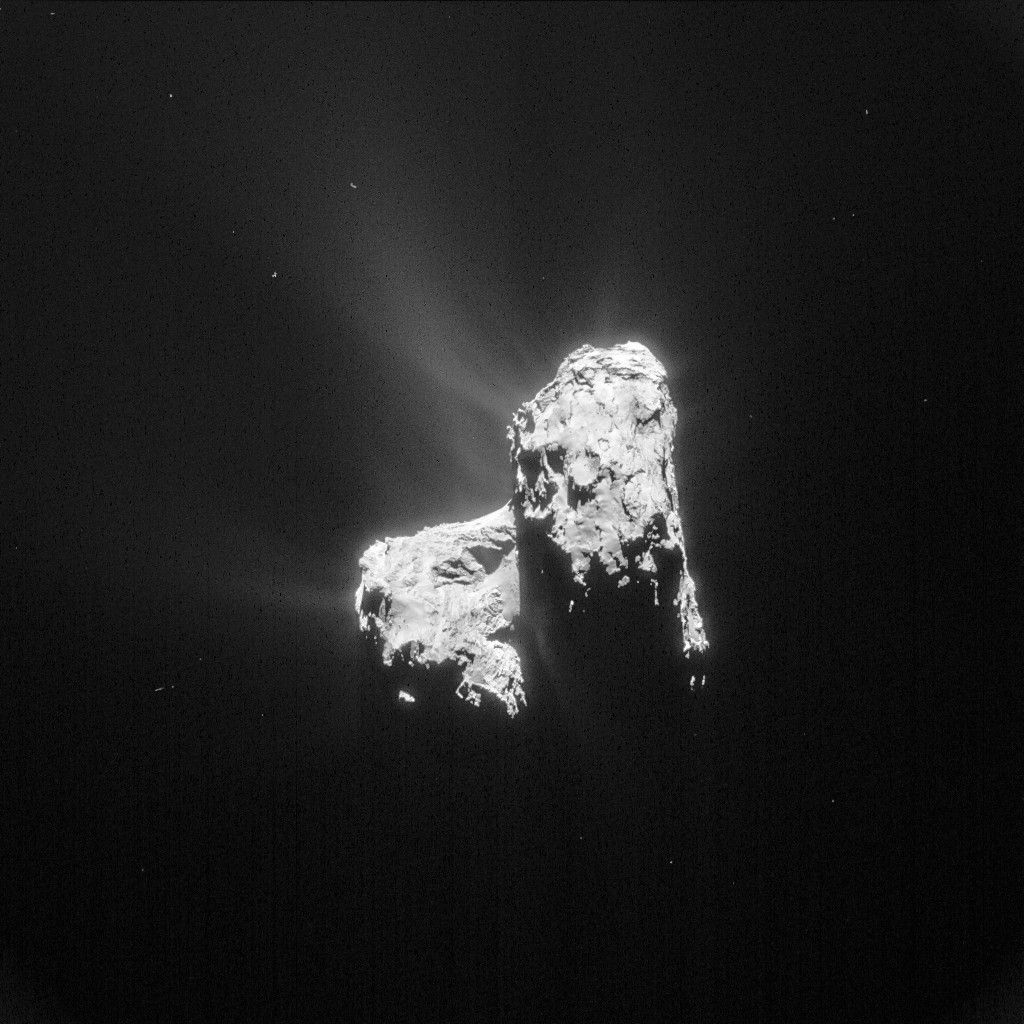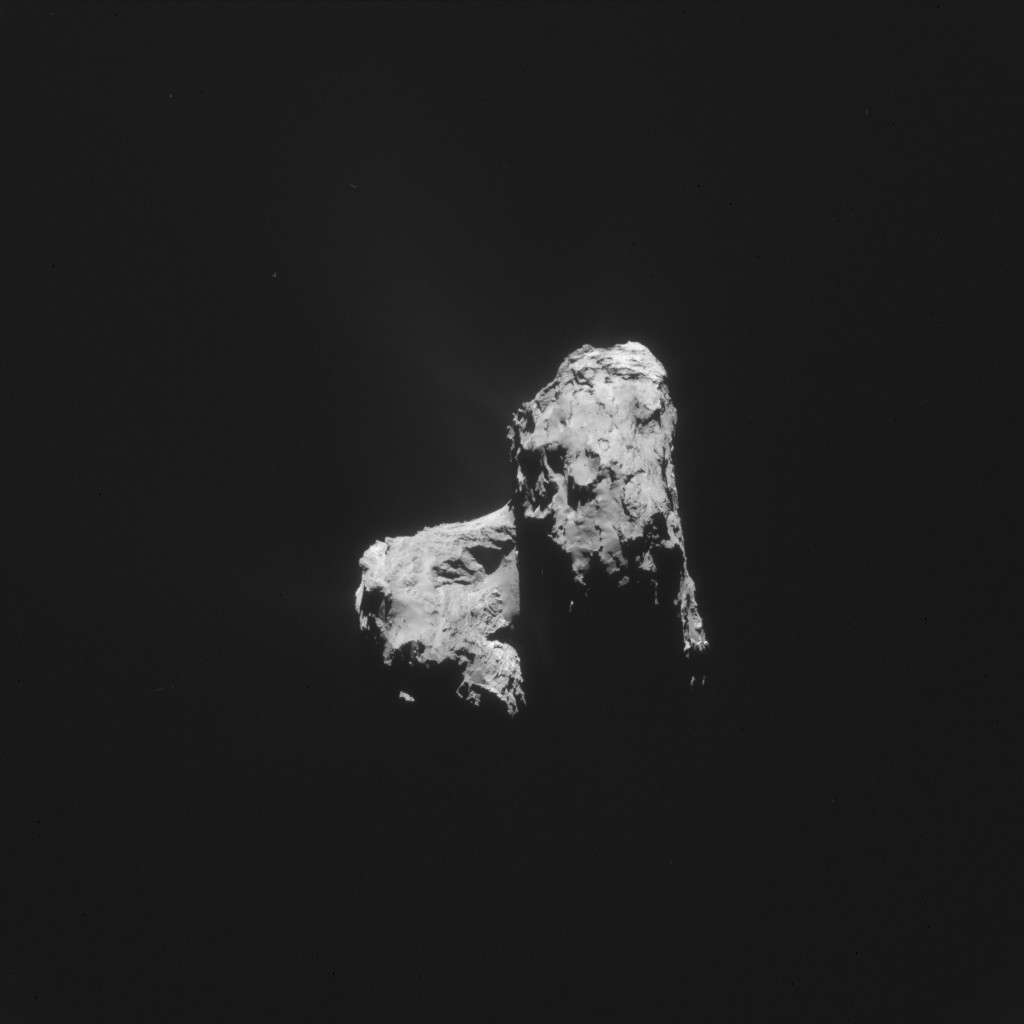This view of Comet 67P/C-G was taken on 20 April from a distance of 128 km from the comet centre.
The resolution is 11 m/pixel and the image measures 11 km across. The image has been processed to bring out details of the comet’s activity, which can be seen all around the illuminated side of the nucleus.

Comet 67P/C-G on 20 April 2015 from a distance of 128 km. Credits: ESA/Rosetta/NAVCAM – CC BY-SA IGO 3.0
Particularly striking is the straight-edged shadow cast by the comet’s large lobe across the ‘neck’ of the small lobe.
Details of the comet’s surface can also be seen. On the small lobe, shadows accentuate the steep cliffs of Hathor and this region’s transition into Anuket in the distance, and the much smoother Hapi in the foreground.
On the large lobe, the outlines of a number of circular and quasi-circular structures are visible in Ash.
The original 1024 x 1024 pixel image is provided below:










Discussion: 9 comments
My unexpected surprise is to see regular circular segments of materia that form circles in variety of spots on the surface of 67/P!
I cannot think other than to external appearance and desappearance of circles formed by solid points… A kind of drawings and signs appearing also in some pictures of south America pictures of the highlands along the Andean plans…
What is the impression that scientist have?
The circular/near-circular pits could perhaps be explained by collapse of the surface due to subsurface voids and/or related to activity (as presented in the Science papers by Thomas et al and Sierks et al earlier this year)
The dusty halo around the comet appears now to have developed into a continuous curtain of streamers from all over the surface of the comet. 67P is starting to take on the appearance of comet Halley in the Giotto images. Less than a month from the Equinox on 67P, when I suspect things might get more lively still.
Lots of nice images of the nucleus from NAVCAM but have not seen any 3D images for a while. Any chance as I think that they really do add an extra dimension to ones appreciation of the terrain.
Robin: What is the Equinox date? I wasn’t able to find this.
I assume this to mean when 67P crosses the celestial equator, and becomes more easily visible in the northern hemisphere. That occurs on May 5th. Essentially the transition between northern autumn/ southern spring.
It would be a cool thing with a stereo pair. It has been a long time since the last time…
Wanting to point the neck’s jet at this perspective is in the shadow, all of it. If just ‘ambient’ ilumination, Then why just the jet?
Intriguing is that one of the brightest surfaces is at top of head’s crater, which happens to be at sunset. luminosity 226/255. Neck -which is at midday- tops at 233/255. Midday body tops at 241/255. This quick values are for the unprocessed photo.
https://blogs.esa.int/rosetta/files/2015/04/ESA_ROSETTA_NAVCAM_20150420.jpg